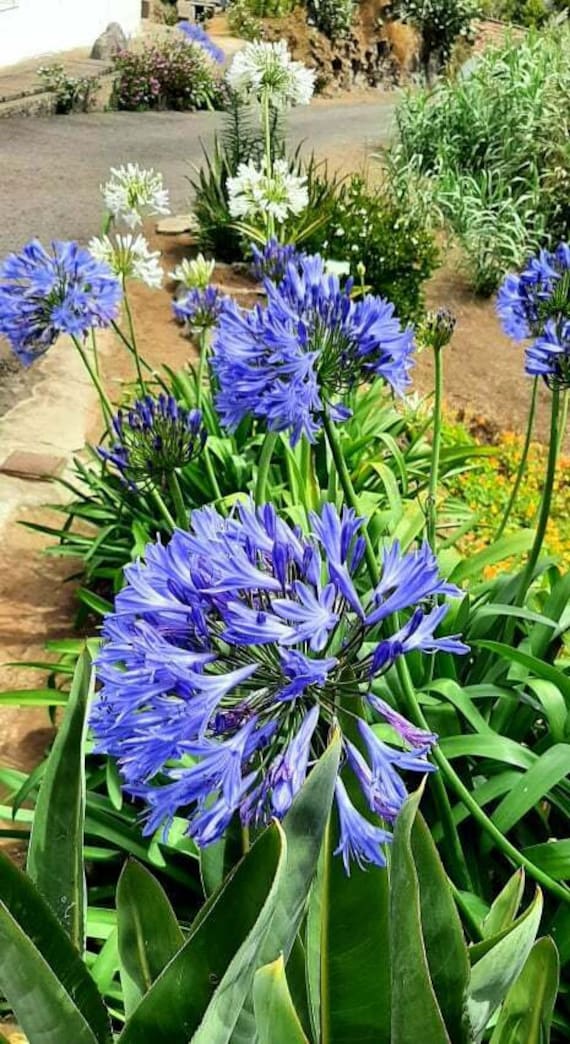Seasonal Agapanthus Treatment: Planning For Winter Months and Summer season
Seasonal Agapanthus Treatment: Planning For Winter Months and Summer season
Blog Article
Grasping the Art of Agapanthus Treatment: Vital Actions for Healthy And Balanced Growth and Vibrant Blooms
In the world of gardening, the cultivation of agapanthus stands as a fulfilling endeavor for those who seek to support these sophisticated blooming plants. From selecting the best range to mastering pruning strategies, the journey towards cultivating growing agapanthus plants is diverse and holds the essential to opening the full possibility of these organic treasures.
:strip_icc()/snow-storm-agapanthus-18f19b9a-3e7c6c88441b4127a9015f9a9fecec59.jpg)
Picking the Right Agapanthus Range

When selecting the right Agapanthus selection for your garden, take into consideration factors such as climate viability, flower shade, and development behavior. Agapanthus, commonly called Lily of the Nile or African lily, can be found in a variety of colors ranging from shades of purple and blue to white. Choose a bloom shade that matches your existing garden scheme to produce an unified landscape. In addition, think about the climate in your area to make certain the Agapanthus selection you choose can prosper in your specific problems. Some selections are extra forgiving of cold temperatures, while others prefer warmer climates. Recognizing the development routine of various Agapanthus varieties is crucial for appropriate placement within your yard. Some varieties have a clumping growth routine, suitable for borders or containers, while others have an even more dispersing nature, ideal for ground cover or mass plantings. By thoroughly assessing these variables, you can pick the excellent Agapanthus range to enhance the charm of your garden.
Perfect Planting Problems
Thinking about the ideal ecological requirements is necessary for successful Agapanthus farming. Agapanthus flourishes in well-draining dirt with a somewhat acidic to neutral pH degree. When planting, select an area that receives full sunshine to partial color. In hotter climates, providing some afternoon shade can stop scorching of the fallen leaves. Agapanthus plants are delicate to cool temperatures and ought to be secured from frost during winter season.
To make sure healthy growth and lively flowers, plant Agapanthus bulbs at a depth of about 2-4 inches and room them 8-12 inches apart. Mulching around the base of the plants helps retain moisture and subdues weed growth.
Watering and Feeding Tips
Keeping appropriate dampness degrees and providing important nutrients are key aspects in the care program for Agapanthus plants. When it comes to sprinkling Agapanthus, it is essential to strike an equilibrium. These plants like regularly wet dirt but are at risk to root rot if overwatered.
Feeding Agapanthus is essential for promoting find more healthy and balanced growth and prolific blossoms. Apply a balanced plant food, such as a 10-10-10 formula, in the very early spring as brand-new development arises. Repeat this application every 6-8 weeks throughout the expanding season. Prevent too much fertilization, as it can result in lavish foliage at the cost of blossoms. Constantly adhere to the manufacturer's guidelines for correct dilution and application methods. By following these watering and fertilizing pointers, you can ensure your Agapanthus plants flourish and create lively, long-lasting flowers.
Pruning Strategies for Agapanthus
Pruning Agapanthus plants at the suitable times and with correct techniques is crucial for keeping their wellness and promoting optimal growth and flowering. The excellent time to trim Agapanthus is in late winter season or early spring prior to new growth emerges.
Deadheading invested flowers can likewise reroute the plant's energy right into producing more blooms instead than establishing seeds. If you want to gather seeds for proliferation, leave some blossoms to mature and completely dry on the plant.
Remember to utilize Find Out More tidy, sharp tools to make accurate cuts and decrease the risk of introducing conditions. Agapanthus. Normal pruning will aid keep your Agapanthus looking cool and healthy and balanced while ensuring a bountiful screen of gorgeous blossoms
Managing Usual Insects and Illness
After ensuring proper trimming techniques for Agapanthus, it is necessary to address common bugs and illness that can influence the health and vitality of these plants. Agapanthus plants are typically durable but can still succumb to specific problems. One common parasite that affects Agapanthus is the Agapanthus gall midge. This small, orange fly lays its eggs in the foliage, bring about distorted growth and flower buds that fail to open up. To battle this parasite, trim and destroy any kind of affected plant parts and consider using insecticidal soap.
In addition, Agapanthus plants can experience from root rot if they are grown in improperly draining dirt. By being alert and taking prompt activity against diseases and parasites, you can assist your Agapanthus plants thrive and create dynamic blooms. Agapanthus.

Conclusion
To conclude, mastering the art of agapanthus care includes choosing the Visit Website best selection, supplying perfect planting conditions, appropriate watering and fertilizing, proper trimming methods, and attending to typical insects and diseases. By complying with these essential actions, you can ensure healthy growth and vivid flowers for your agapanthus plants. Remember to consistently monitor and maintain your plants to promote their total health and long life.
To make sure healthy growth and dynamic flowers, plant Agapanthus bulbs at a deepness of about 2-4 inches and area them 8-12 inches apart. By following these watering and feeding suggestions, you can ensure your Agapanthus plants grow and generate lively, durable blossoms.
One typical pest that influences Agapanthus is the Agapanthus gall midget. Furthermore, Agapanthus plants can experience from root rot if they are grown in improperly draining pipes dirt. By following these vital actions, you can ensure healthy and balanced development and lively blooms for your agapanthus plants.
Report this page